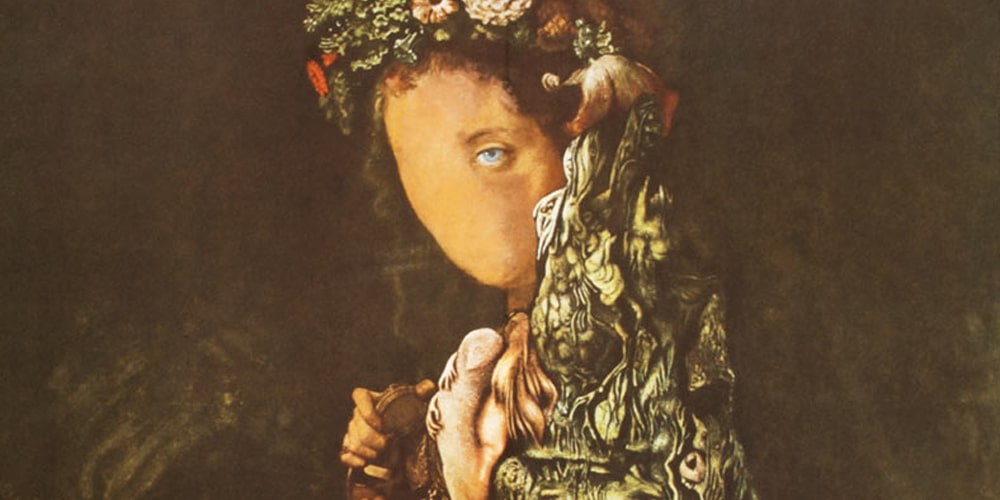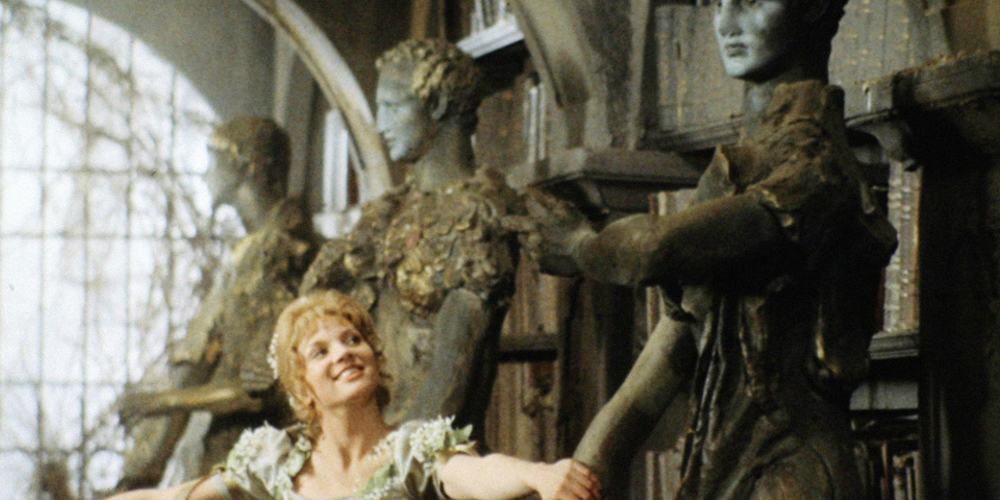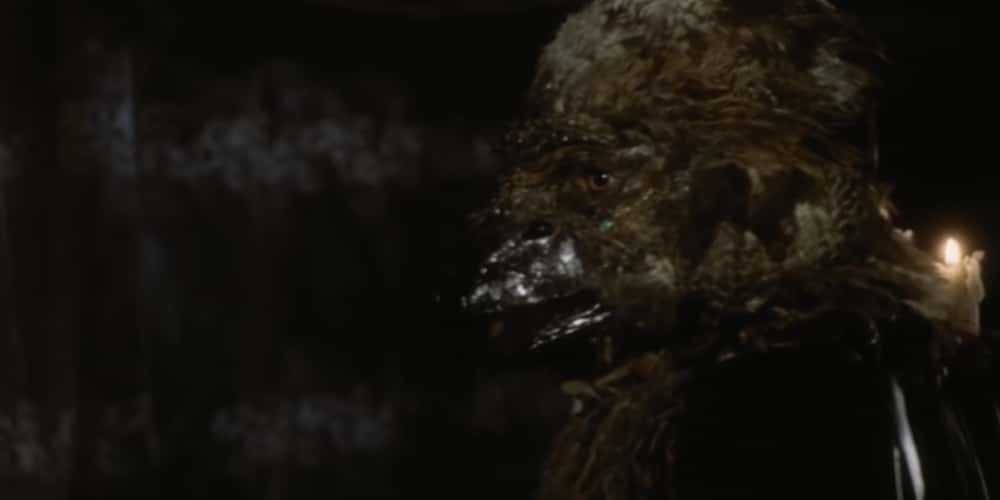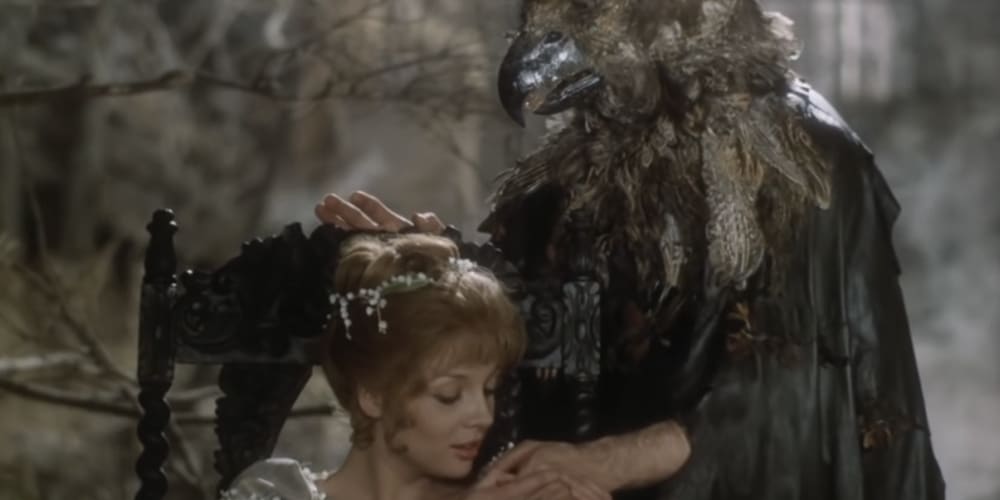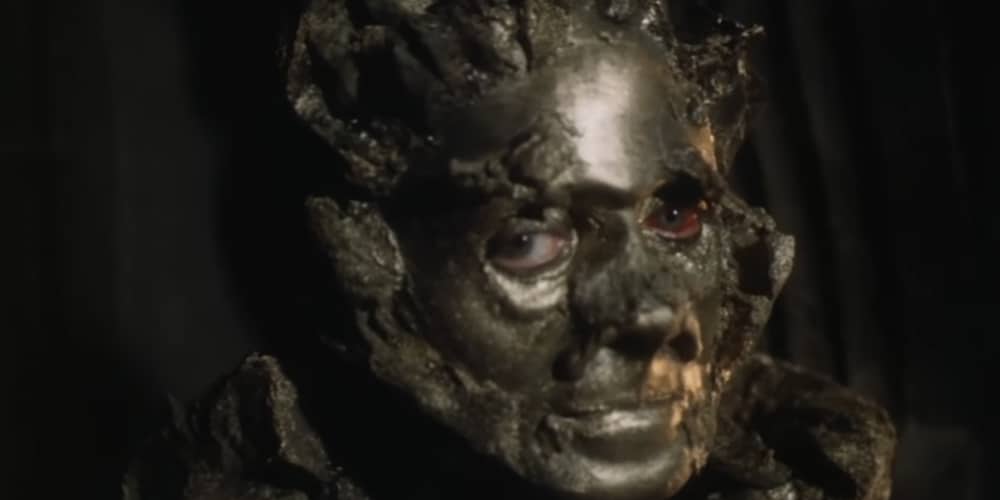With the holidays rolling around and magic (in its various incarnations) seeming to be in the air, the comforting whimsy of fairy tales is even more inviting than usual. Yet the one that always brings about the most appropriate of feelings during this time of year is Beauty and the Beast – a tale so steeped in the imagery of cold juxtaposed with warmth, red roses with fluffy fur trims, it seems primed for the modern holiday aesthetic.
But which among these film adaptations of this “tale as old as time” fill that holiday need the best? Could it be the 1991 Disney’s animated classic, perhaps? What about the Jean Cocteau 1946 version? Maybe the 2017 Disney live-action retelling? All of these work for their own unique reasons. But the one that will be discussed here is a beautiful yet haunting cinematic example of the transition from Fall to Winter – and it certainly isn’t a flick you’d find on your grandmother’s VHS shelf. Behold the 1978 hidden gem known as Panna a netvor.
Once Upon A Time…
Directed by Juraj Herz, this Czechoslovak production tells a different version of the classic tale. The general plot points are the same – a young girl sacrifices her freedom to live with a monster in exchange for her father’s life. But other than that, the rose scenario and the whole Beauty’s daddy being a failed merchant thing, the rest of the details are quite unique.
The film opens on a dreary countryside. Fog is rolling into the air, while a group of travelers continue on down the road against the conditions. This, along with the opening title cards, set quite a mood – one that evokes a European horror sprinkled with 70’s cinematic comforts. Grotesque images of butchers working their craft, blood included, are juxtaposed against a whimsical fairy tale backdrop. Our film’s Beauty, Julie (Zdena Studenková), falls into frame as her father walks inside his cozy home to greet his daughters.
As we return to the travelers, the results of that fog begin to show. For the cause of such weather is, as you may have guessed it, a bit of enchantment on the land. For a creature resides in a palace not too far. But unlike the Beast’s of cinema’s past, this one does not take the form of a lion nor bear, but rather a bird – a monster who shows no reservations towards demonstrating his full destructive potential.
Per these descriptions, much like the fairy tale itself, this movie might at first glance appear like a product of its time – with shlocky violence and Grindhouse eleganza shown throughout its opening frames. Yet as the film progresses, Panna a netvor turns out to be a gentle yet mature take on Beauty and the Beast that many other adaptations don’t quite measure up against.
True As It Can Be
Though some elements of this movie perhaps haven’t aged as gracefully as others, there’s one aspect that continues to sparkle – the romantic chemistry between the two leads. All Beauty and the Beast adaptations are dependent on the believability of the romance between the two title characters – whether it be that you see why they love one another or embrace the acting choices within the simple story structure, it has to click. And in Panna a netvor ‘s case, the tension is there in its purest form.
On paper, Julie is not the greatest of Beauty characters. She doesn’t have the strong personality of Disney’s animated Belle, nor does she have the commanding presence of Jean Cocteau’s leading lady. Instead, Julie is rather the most straight forward rendition of the Beauty archetype – with her blonde locks and doll-like features, she’s as uncontroversial a fairy tale protagonist as they come. But Studenková’s performance is where the real magic begins.
The same goes for the character of Netvor (Vlastimil Harapes) – a typical tragic Beast, who’s most exciting aspects (much like with Julie) are the things happening around him as opposed to himself. Yes, he’s a bird-human hybrid, with claw-like hands, but what else is there? Not much until Harapes takes control of the creature and conjures up the soul inside of this most majestic of monsters.
Together, these two actors produce some of the most striking movements. Every bit of fear, curiosity, and romantic tension is beautifully portrayed through their gestures – making the whole experience feel more in line with a choreographed ballet. And when you couple that with the slow transformation of the two, their character beats feel incredibly luxurious and organic by the film’s conclusion.
The Rules and Power of The Beast
Perhaps the best element of any Beauty and the Beast tale is arch of the monstrous title character. It’s better when they don’t actually physically transform – because who wants to become a socially acceptable beauty standard? Gross. Instead, it is more the rules surrounding his curse, along with the steps towards that inner transformation, that continues to hold my curiosity. And in Panna a netvor, these details are expanded upon in the most unique of ways.
In the film, Netvor is not necessarily the antagonist. Instead, through bits of dialog, we’re given the kind of intriguing breadcrumbs that are the stuff of many fanfiction writers’ dreams. Often, we hear a demonic fairy voice that haunts Netvor’s every thought. Is he the beast within? A monster who cursed him as a baby? There are also wicked troll-like beings who exist within the shadows of the castle. Are they the suppliers of the voice? Are they cursed, cupid angels? There are no correct answers to these questions, but those gaps make the film’s lore even more tragic yet enchanting.
It’s clear that Herz was taking many visual queues from Cocteau’s version. But rather than make straight-up copies or homages, Herz sprinkles a bit of Hammer Horror style gothic touches, making specific sequences come from the nightmarish fairy tales of old rather than the pastel sort Disney would become famous for. With shots of enchanted statues lowering Julie’s bed to become a coffin for her to dream within, the conjuring of metaphors and other analyzations are endless.
However, it is the world-building that these sequences provide that makes Netvor’s journey from bird-man to prince even more fascinating. Mentions of a young women’s blood keeping him from becoming weak, him existing as a monster for 20 years, along with a series of spooky portraits all combine to show that Herz did his homework. He’s clearly noting inspiration from the original La Belle et La Bete tale (for which the Beast was cursed by an evil fairy) but also adds his signature narrative touches that make Netvor even more tragic and flawed.
When all of this is combined with the critical decision to make this Beast’s transformation a slow process – in which his hands turn from claws to human before the rest of him changes – it’s hard not to feel yourself falling down the rabbit hole of romantic tension and sympathy towards this creature.
Beauty is in the Eye of the Beholder
By all accounts, Panna a netvor is not the fairy tale cinematic experience for everyone. It’s as gruesome as it is beautiful, spooky as it is romantic, and clearly from a decade of filmmaking that either makes you feel enthralled or nauseous. But for those that are willing to go through the bold 70’s imagery and directorial choices, they’ll find a film that balances the light, and the dark of this timeless tale.
Perhaps certain non-Beauty and Beast involving sequences drag at times, the musical score is loud and limiting, and maybe the characterizations aren’t as rich as Disney’s animated take. But like Belle sings, Panna a netvor has “something there” that many other adaptations (let alone fairy tale films) are too afraid to produce – intimacy.
Netvor’s castle isn’t grand or glamorous, Julie’s gowns are covered in dirt and mud, and there are no enchanted talking objects to be found – but what is there is rich, raw emotion in every frame. POV shots, elegant close-ups, and warm cinematography all prove Herz’s devotion towards the sentiment within the grand material. And in a modern film landscape that often goes for chaotic visuals over quiet moments of storytelling, it’s always good to have reminders from the past of filmmakers who colored outside the lines of genre cinema.
So if you’re willing to explore a tale with a more grimacing appearance, then you (much like Julie) may discover a flawed yet beautiful exploration into pure, organic fairy tale filmmaking. The kind that explores the ugliness of fantasy as much as it does the charms of it. And when the colors of Fall are shifting into that of Winter, its also nice to have a reminder that beauty can be found anywhere at any time – regardless of the conditions that surround it.
You can follow my adventures on all social media platforms on @magicalamode.
Don’t forget to follow us on Twitter and Instagram and like us on Facebook.
Discover more from
Subscribe to get the latest posts sent to your email.

